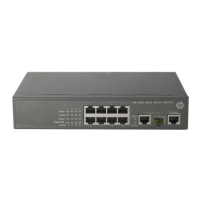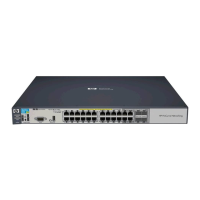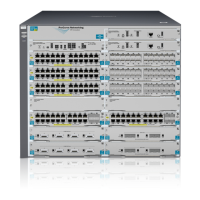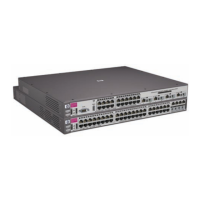13
No. Attribute Descri
tion
31 Calling-Station-Id
User identification that the NAS sends to the server. For the LAN access service
provided by an HP device, this attribute carries the MAC address of the user in
the format HHHH-HHHH-HHHH.
32 NAS-Identifier Identification that the NAS uses for indicating itself.
40 Acct-Status-Type
Type of the Accounting-Request packet. Possible values are as follows:
• 1—Start.
• 2—Stop.
• 3—Interim-Update.
• 4—Reset-Charge.
• 7—Accounting-On. (Defined in 3GPP, the 3rd Generation Partnership
Project.)
• 8—Accounting-Off. (Defined in 3GPP.)
• 9 to 14—Reserved for tunnel accounting.
• 15—Reserved for failed.
45 Acct-Authentic
Authentication method used by the user. Possible values are as follows:
• 1—RADIUS.
• 2—Local.
• 3—Remote.
60 CHAP-Challenge
CHAP challenge generated by the NAS for MD5 calculation during CHAP
authentication.
61 NAS-Port-Type
Type of the physical port of the NAS that is authenticating the user. Possible
values are as follows:
• 15—Ethernet.
• 16—Any type of ADSL.
• 17—Cable (with cable for cable TV).
• 19—WLAN-IEEE 802.11.
• 201—VLAN.
• 202—ATM.
If the port is an ATM or Ethernet one and VLANs are implemented on it, the value
of this attribute is 201.
79 EAP-Message
Used for encapsulating EAP packets to allow the NAS to authenticate dial-in
users via EAP without having to understand the EAP protocol.
80
Message-Authentic
ator
Used for authentication and checking of authentication packets to prevent
spoofing Access-Requests. This attribute is used when RADIUS supports EAP
authentication.
87 NAS-Port-Id String for describing the port of the NAS that is authenticating the user.
HP proprietary RADIUS sub-attributes
No. Sub-attribute Descri
tion
1 Input-Peak-Rate Peak rate in the direction from the user to the NAS, in bps.
2 Input-Average-Rate Average rate in the direction from the user to the NAS, in bps.
3 Input-Basic-Rate Basic rate in the direction from the user to the NAS, in bps.

